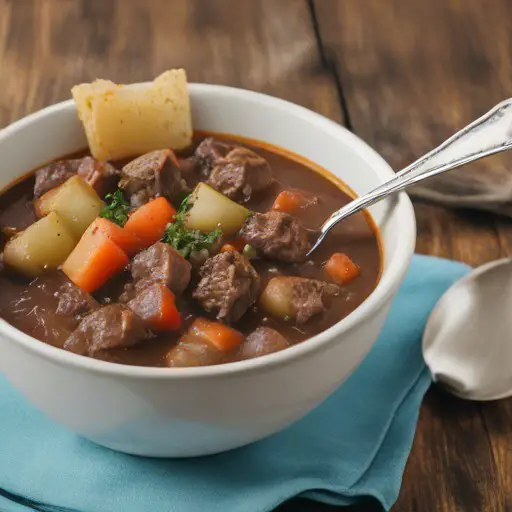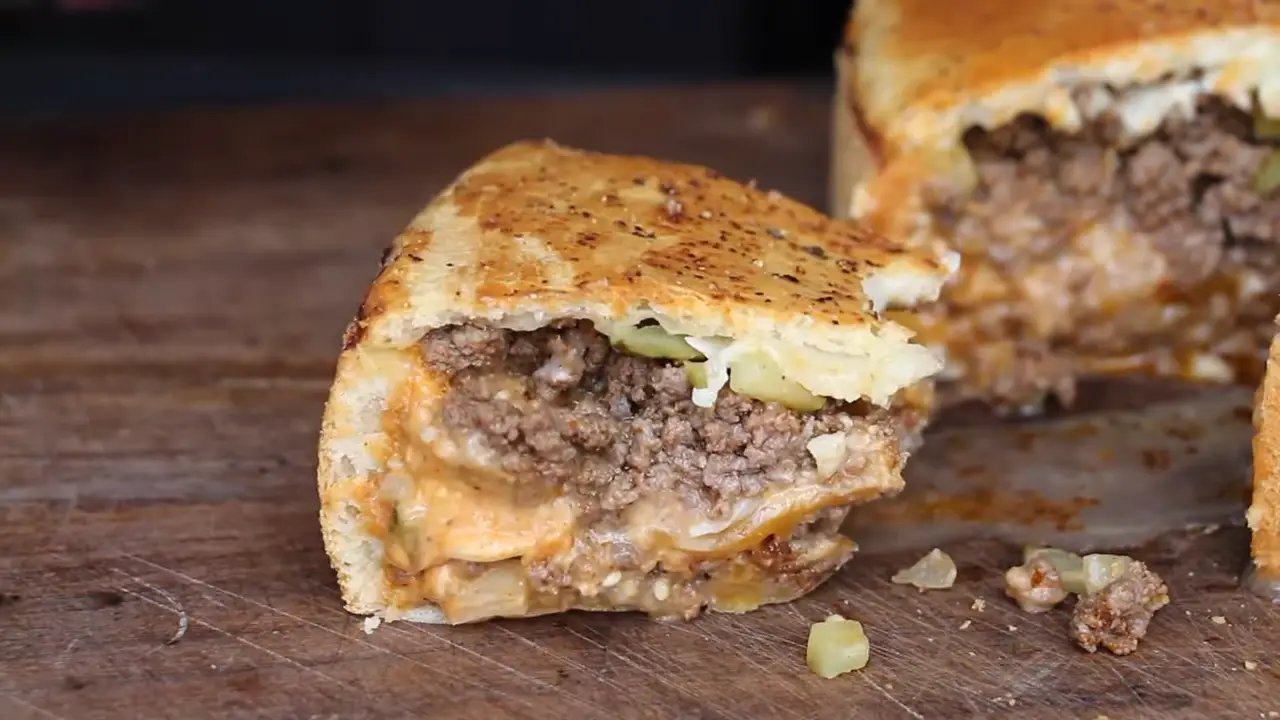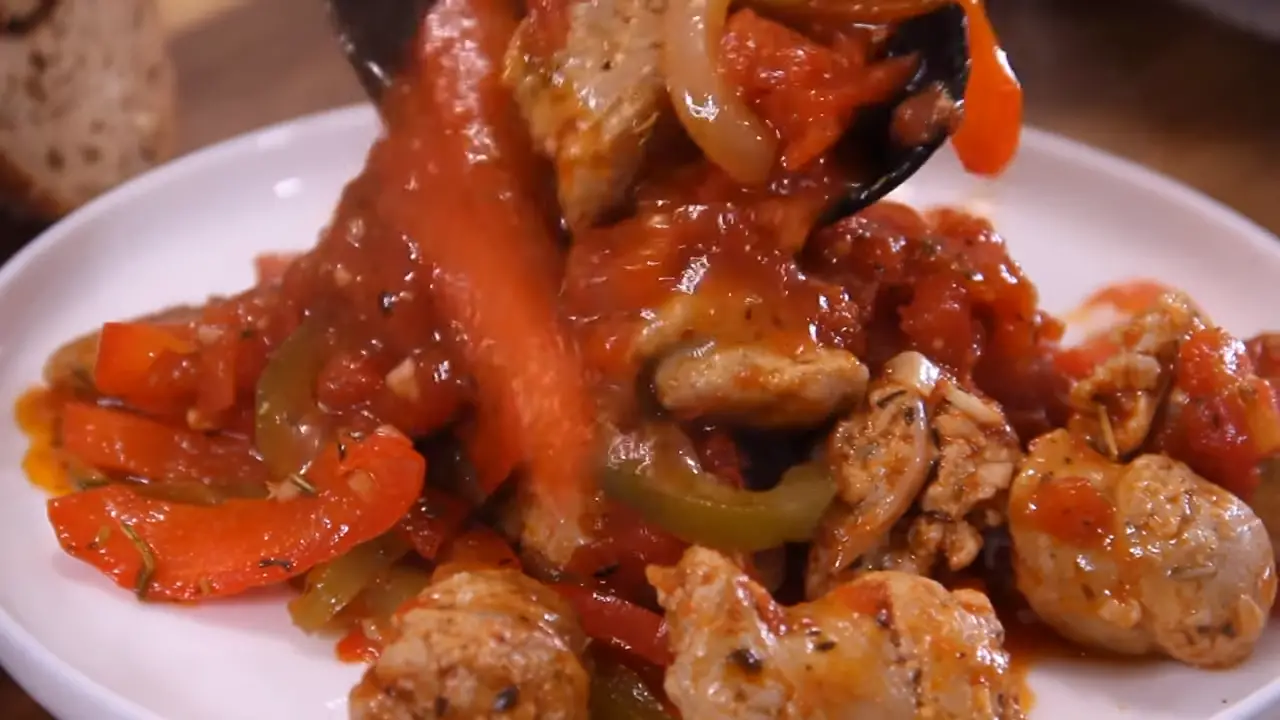Welcome to a culinary escapade where comfort meets sophistication—an exploration of the timeless classic, Beef Stew. In this extensive journey, we peel back the layers of this heartwarming dish, revealing the secrets to creating a stew that’s not only rich in flavors but also a testament to the artistry of slow-cooked perfection. Join us as we delve into the nuances of selecting the finest ingredients, mastering the art of seasoning, and achieving a melt-in-your-mouth tenderness that defines the essence of a perfect Beef Stew.
Ingredients:
- Beef Chuck (2 pounds, cut into 1-inch cubes): The star of our stew, known for its marbling and tenderness.
- All-Purpose Flour (1/2 cup): For dredging the beef and creating a flavorful crust.
- Vegetable Oil (2 tablespoons): To sear the beef and enhance its richness.
- Onions (2 large, diced): Adding a sweet and savory depth to the stew.
- Garlic (4 cloves, minced): Elevating the aroma and savory notes.
- Carrots (4 large, sliced): Contributing natural sweetness and vibrant color.
- Potatoes (4 medium, diced): The comforting starch element that complements the beef.
- Celery (3 stalks, sliced): Providing a refreshing crunch to the stew.
- Tomato Paste (2 tablespoons): Introducing a concentrated tomato flavor.
- Red Wine (1 cup): Elevating the richness and complexity of the stew.
- Beef Broth (4 cups): The savory liquid that forms the base of the stew.
- Bay Leaves (2): Infusing a subtle herbal note.
- Thyme (1 teaspoon, dried or fresh): Adding earthy undertones to the stew.
- Salt and Pepper (to taste): Enhancing and balancing flavors.
Instructions:
- Dredge and Sear the Beef: Pat the beef cubes dry with paper towels, dredge them in flour, and season with salt and pepper. In a large Dutch oven, heat vegetable oil over medium-high heat. Sear the beef cubes until browned on all sides. Work in batches to avoid overcrowding the pot.
- Sauté Onions and Garlic: Add diced onions to the pot and sauté until softened. Add minced garlic and sauté for an additional minute until fragrant.
- Deglaze with Red Wine: Pour red wine into the pot, scraping the bottom to release any flavorful bits. Allow the wine to simmer and reduce by half, intensifying its flavors.
- Add Tomato Paste: Stir in tomato paste, ensuring it coats the beef and onions. Cook for a few minutes to eliminate the raw taste of the paste.
- Introduce Vegetables: Add sliced carrots, diced potatoes, and sliced celery to the pot. Stir to combine with the beef and onions.
- Pour in Beef Broth: Pour beef broth into the pot, covering the ingredients. Bring the stew to a gentle boil.
- Season and Add Herbs: Season the stew with salt and pepper according to taste. Add bay leaves and thyme to infuse their flavors. Reduce the heat to low, cover the pot, and simmer for at least 2 hours or until the beef is fork-tender.
- Check and Adjust Seasoning: Taste the stew and adjust seasoning as needed. Remove bay leaves before serving.
- Serve and Enjoy: Ladle the rich and aromatic Beef Stew into bowls. Garnish with fresh parsley if desired. Serve with crusty bread or over a bed of mashed potatoes for a complete meal.
Cook Notes:
- Choosing the Right Cut: Beef chuck is ideal for stewing due to its marbling, ensuring a flavorful and tender result.
- Searing for Flavor: Searing the beef before slow-cooking creates a savory crust, enhancing the overall richness of the stew.
- Red Wine Tip: Choose a red wine that you would enjoy drinking. It adds depth and complexity to the stew.
- Slow and Low: The key to a perfect beef stew is the slow and low cooking process. It allows the flavors to meld and the beef to become tender.
Variations:
- Beer Infusion: Replace red wine with dark beer for a robust and malty flavor profile.
- Spice it Up: Add a kick by incorporating diced jalapeños or a pinch of red pepper flakes.
- Root Vegetable Medley: Experiment with parsnips, turnips, or rutabagas for a diverse flavor profile.
Keto Version:
For a keto-friendly beef stew, substitute potatoes with cauliflower florets. The lower-carb alternative adds a similar texture without compromising the rich flavors.
Low-Carb Version:
Reduce the carb content by omitting potatoes entirely or using a small amount. Focus on low-carb vegetables like zucchini or bell peppers to maintain a hearty feel.
As we conclude this extensive culinary exploration into the world of Beef Stew, envision the steam rising from a bowl of this hearty masterpiece—a true labor of love. The melding of beefy richness, aromatic herbs, and the comforting presence of vegetables creates a symphony of flavors that warms the soul. Whether enjoyed on a chilly evening or shared with loved ones, a bowl of Beef Stew transcends time and brings people together. Here’s to the timeless joy of crafting a dish that not only nourishes the body but also feeds the spirit. May your kitchen be filled with the comforting aroma of slow-cooked perfection—a testament to the enduring allure of a classic Beef Stew!







